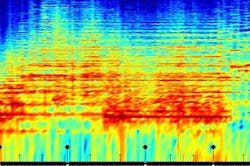As the need for ever-higher wireless data rates has grown, it has become necessary to use higher and higher carrier frequencies. Gigabit data rates generally require carriers of multiple gigahertz. But thanks to parallel techniques such as multicarrier modulation schemes (OFDM) and multiple-input, multiple-output (MIMO), higher data rates are now possible on the lower frequencies.
However, as you know, useable and preferred VHF/UHF spectrum is in short supply or just too expensive to be practical. So we keep pushing applications into the GHz regions we know as millimeter waves (mmWaves). What happens when we run out of mmWave spectrum? It will be a while before that
The upper limit of the mm-wave spectrum is generally considered to be 300 GHz. Above that lies the optical spectrum, including infrared (IR), visible, and ultraviolet (UV) light. Normally we express optical waves in wavelength rather than frequency. For example, red is 750 nanometers (nm) or 400 terahertz (THz). The other end of the visible spectrum is violet—or 375 nm, or 800 THz.
IR is generally in the 750- to 1,600-nm range. We already use IR for data transmission both on fiber optical cable as well as wireless (more on this later), but why not visible light? That is the proposed medium for a new wireless technology called Li-Fi (Light Fidelity), similar to Wi-Fi.
Li-Fi is the brainchild of German professor Harald Haas of the University of Edinburgh. He proposes to modulate an LED with high-speed data that can be received by a photodiode and converted back into data. The scheme could use any white (or color) LED as the transmitter: The LEDs could be in a lamp or an overhead fixture.
Even street lights or lighting in hotels, airports, or convention centers could be used. Amplitude shift keying (ASK) would vary the intensity of the LEDs. Your eye is not fast enough to see any “blinking.” It has been shown that data rates in the 1 to 10 Gb/s range can be achieved and up to 224 Gb/s has been demonstrated.
Obviously, the range is short, limited to the reach of the light. This can be overcome by modulating multiple LEDs in parallel and spread over a wider range. The coverage would be mainly indoors to avoid sun light or other sources that would interfere. Coverage would also be omnidirectional. A benefit of short range indoor coverage is security.
The use of light for data transmission is not new. Most TV and consumer electronic gear still use IR remotes. And remember the Infrared Data Association (IrDA) system of the mid-to late-1990s? It was used in some PDAs, early smartphones, and laptops. IrDA uses 850-900 nm LEDs to transmit data usually at rates of 4 or 16 Mb/s.
Higher rates of 1, 5 and 10 Gb/s are also available today. The standard is no longer widely used. Its main limitation was its need for line of sight (LOS) transmission within a 15 degree cone of light and its very short range (only a few meters at best.).
Li-Fi is an improvement over IrDA as it is non-directional and uses common LED bulbs or equivalent for transmitters. Longer range is possible. What is not clear is how two-way communication occurs. As defined, Li-Fi is download-only from LED lamp to laptop or smartphone or PC. What is the upload path? Does the laptop or other device need a white LED to transmit back to a light sensor in the transmitting lamp? How does that work?
Li-Fi is a neat new wireless idea that needs further development, but it seems practical for some applications where conventional radio does not work well. Ultimately, it is one more option for LANs and IoT. Practical terahertz wireless has been achieved.
About the Author
Lou Frenzel
Technical Contributing Editor
Lou Frenzel is the Communications Technology Editor for Electronic Design Magazine where he writes articles, columns, blogs, technology reports, and online material on the wireless, communications and networking sectors. Lou has been with the magazine since 2005 and is also editor for Mobile Dev & Design online magazine.
Formerly, Lou was professor and department head at Austin Community College where he taught electronics for 5 years and occasionally teaches an Adjunct Professor. Lou has 25+ years experience in the electronics industry. He held VP positions at Heathkit and McGraw Hill. He holds a bachelor’s degree from the University of Houston and a master’s degree from the University of Maryland. He is author of 20 books on computer and electronic subjects.
Lou Frenzel was born in Galveston, Texas and currently lives with his wife Joan in Austin, Texas. He is a long-time amateur radio operator (W5LEF).

